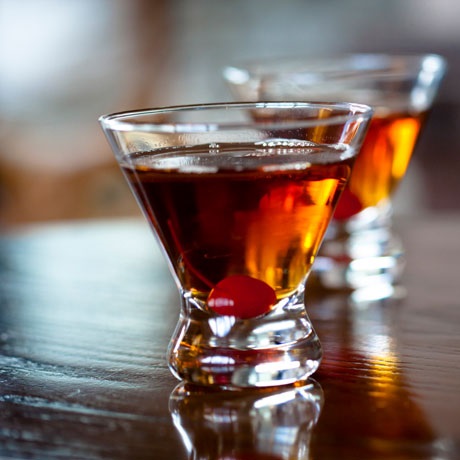Whiskey Still Plans "Build-it-Yourself"
When it comes to making moonshine, whiskey distilling is most commonly done in a pot still. This is because a pot still is the best choice for making spirits that are rich in flavor and texture. Popular alcohol choices for making pot still moonshine include dark rum, bourbon, single-malt scotch and whiskey.
Using a home made pot still to produce rich flavorful whiskey is a common practice that can be done right out of your own kitchen. However, keep in mind that this is NOT legal in many areas.
Simple Whiskey Still Plans can be derived from basic products you can find around your house and in your kitchen. It can be very inexpensive to make up your home made pot still to get into the distilling process with little or no money invested.
What Type of Still Is Best Used for Whiskey Distillation?
 Distilling bourbon whiskey or rye whisky etc. in a way to take advantage of flavours
that enhance the taste is an important consideration.
Distilling bourbon whiskey or rye whisky etc. in a way to take advantage of flavours
that enhance the taste is an important consideration.
From what popular trend has shown, pot stills are best for Whiskies. This will impart some flavors from the grain your mashing, see our pot still liquor distillation guide. Both will make a clear distillate, the color is from the barrel. A pot still will allow the smell as well as the flavor of rye or other grains to come through in the spirit. A column (reflux) still is designed to will strip all or nearly all flavor from the product.
What you can do with the reflux is to remove much of the packing from the column, and run it with the reflux return closed. Essentially, it becomes a pot still.
Not all reflux stills can be run in this configuration, but a valved reflux can, and so can the column stills that run with cooled through tubes. Through tubes should be disconnected from the water supply for this configuration. Vapor management stills would need a little modification, a cap where the coil is, and steam going right to the liebig condenser.
Whiskey Pot Still Plans
A pot still is the easiest type to make, and great for flavored liquors. Our whiskey Still Plans are a great place to start and check out our soldering guide as well to get started in the right direction. Additional there are internet instructions that include keg whiskey pot still plans and traditional Kentucky whiskey copper pot still plans that are easy to follow home fabrication projects.
Whiskey vs. Whisky: Where, Why, What?
- Where did it come from?
 The
earliest references of whiskey can be traced back to the early 1400's and its origin with
the medieval monks of Ireland.
The
earliest references of whiskey can be traced back to the early 1400's and its origin with
the medieval monks of Ireland.
- Irish Whiskey and its earliest recorded origins date back to 1405 where the first confirmed written record of whiskey in Ireland comes from the Annals of Clonmacnoise, an early 17th-century Modern English translation of a lost Irish chronicle covering events in Ireland from pre-history to AD 1408. This earliest reference attributes the death of a chieftain to "taking a surfeit of aqua vitae" at Christmas.
- Scottish Whisky shows its first evidence of whisky production in Scotland recorded with an entry found in the Exchequer Rolls for 1494. This first recorded mention of whisky references malt being sent to "Friar John Cor, by order of the king", enough to make approximate 500 bottles of aquavitae.
- Why are there two spellings?
The variation in the way that Whiskey is spelled originates from its translation in the Scottish and Irish Gaelic forms. The Scots spell it whisky and the Irish spell it whiskey. Whiskey with the extra 'e' is typical spelling used in American whiskies as well. The whiskey term was brought to the United States by the Irish immigrants in the 1700s. The word whisky comes from the Gaelic term ‘uisge beatha’, or ‘usquebaugh’, meaning ‘water of life’.
So why do you see the name of the liquor spelled both as “whiskey” and as “whisky?” It is generally spelled “whiskey”—with an e—in the United States and Ireland. It is spelled “whisky”—without the e—in Scotland and Canada, which are both well known for their whisk(e)y, along with several other countries.
- What makes a distilled spirit a Whiskey?
Whisky or Whiskey is specifically made from grain and is aged in wood casks. Different types of whiskey are separated by the grain they are made from, how they are aged, and specific regional processes. Whiskey is made from fermented grain mash where various grains (which may be malted) are used for different varieties, including barley, corn (maize), rye, and wheat. The wooden casks that Whisky is typically aged in, are generally made of charred white oak.
- What are the typical Whiskey variations?
Scotch Whisky comes from Scotland. Scotches are made mostly with barley, and are smokey from the way the barley is kiln dried.
Bourbon Whiskey is a type of American barrel-aged whiskey made primarily from corn "at least half". Bourbon Whiskey is aged in charred barrels that infuse caramel and vanilla flavors.
Rye Whiskey is made from rye. In the United States, "rye whiskey" by law is made from a mash of at least 51 percent rye. The other ingredients of the mash are usually corn and malted barley. It is distilled to no more than 160 (U.S.) proof (80% abv), and aged in charred, new oak barrels. The whiskey must be put into such barrels at not more than 125 (U.S.) proof (62.5% abv). Rye whiskey that has been properly aged for at least two years may be further designated as "straight", as in "straight rye whiskey".
Aqua Vitae and its relation to Whiskey
Aqua vitae (Latin for "water of life") or aqua vita, is an archaic term widely use during the Middle Ages and the Renaissance for a concentrated aqueous solution of ethanol. The origin is undoubtedly much earlier, having been used by Saint Patrick and his fellow monks to refer to both the alcohol and the waters of baptism.
Aqua vitae was a term often applied to important locally produced distilled spirits. Examples include:


